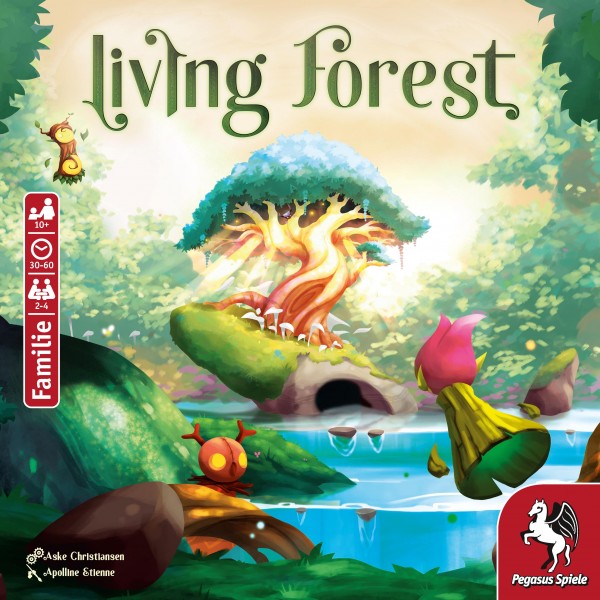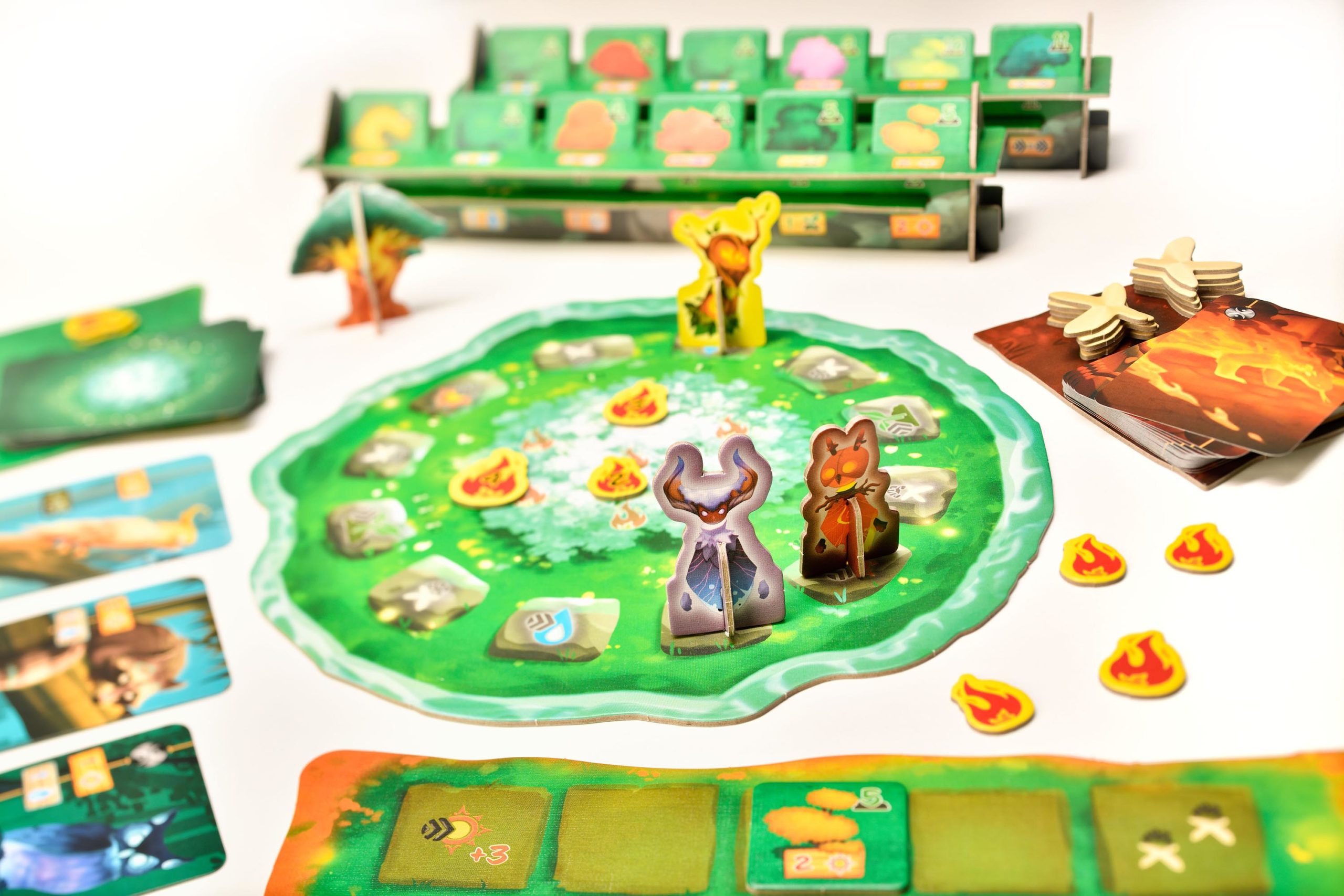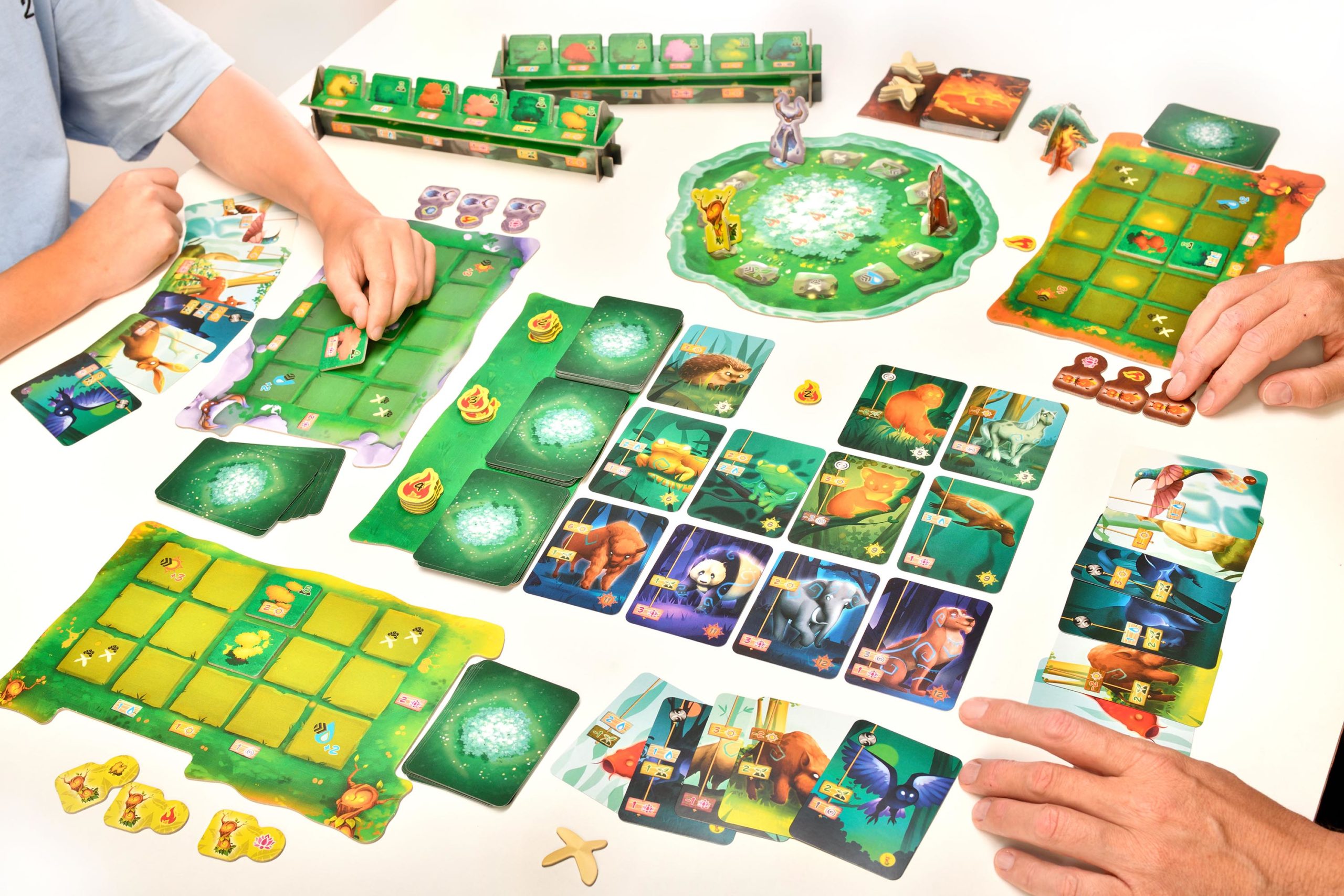
The forest is on fire. In the game “Living Forest”, as in reality, this is a threat to us all. That’s why players are all working together, to a certain extent, to try and contain the rising danger. Players work to douse the flames, plant new trees in the forest and collect magical lotus flowers to restore the power of the sacred grove. If at the end of a round any player has managed to reach at least twelve points in any of these three disciplines, the game ends and the forest is saved. The game feels highly interactive: players have the power to take at least a few points away from their opponents, resulting in a sense of tension all the way to the end. Helping us along the way are spirits of nature, which are gradually added to players’ decks. But be careful! Some of these are solitary beasts, and so players always have to consider whether it’s worth revealing more animal cards to help. If three solitary animals are revealed in a single round, you can only take one action, so it always pays to stop revealing cards at just the right time.
There are three key factors to the thrill and attraction of “Living Forest”: the exciting race to twelve points, the risky gamble of when to stop revealing cards and the high level of interaction with your opponents. The three different victory conditions are especially motivating, ensuring a high level of replayability and a different dynamic to each new game.



